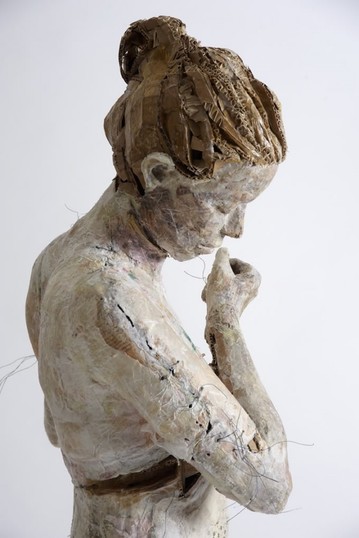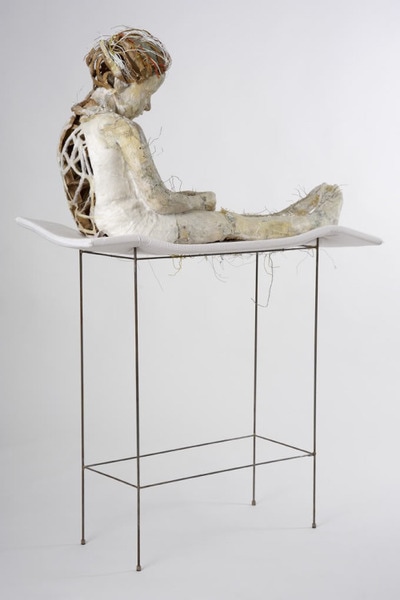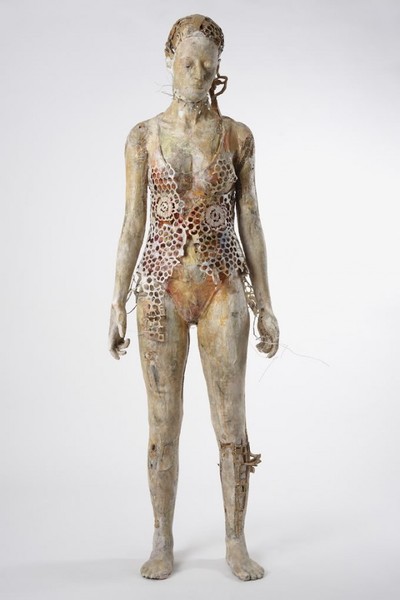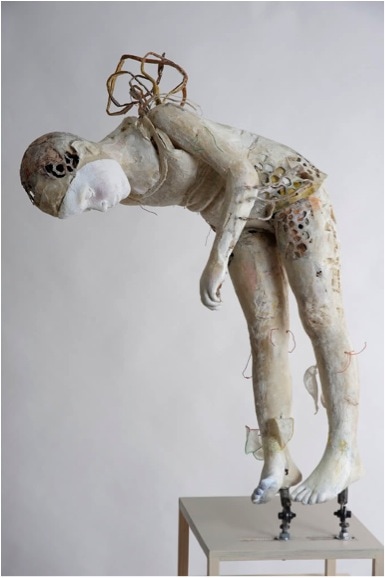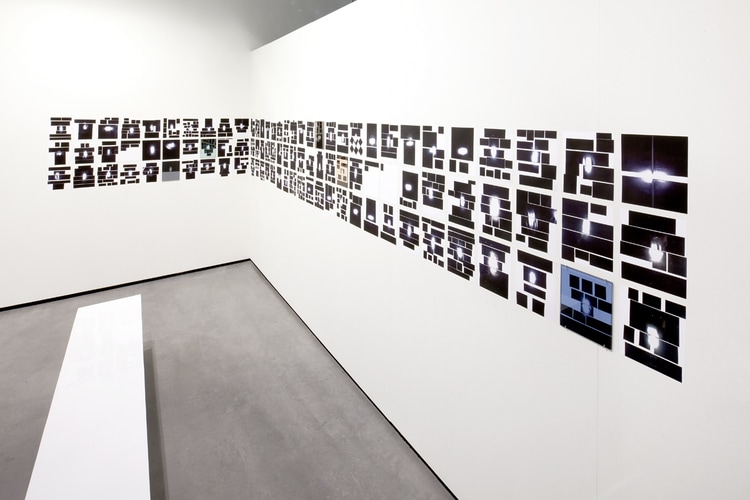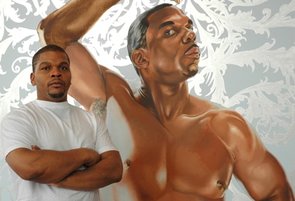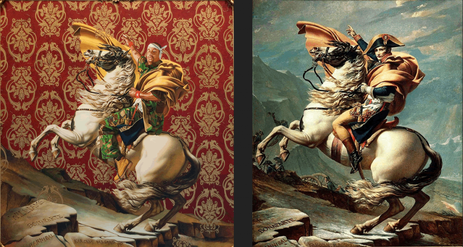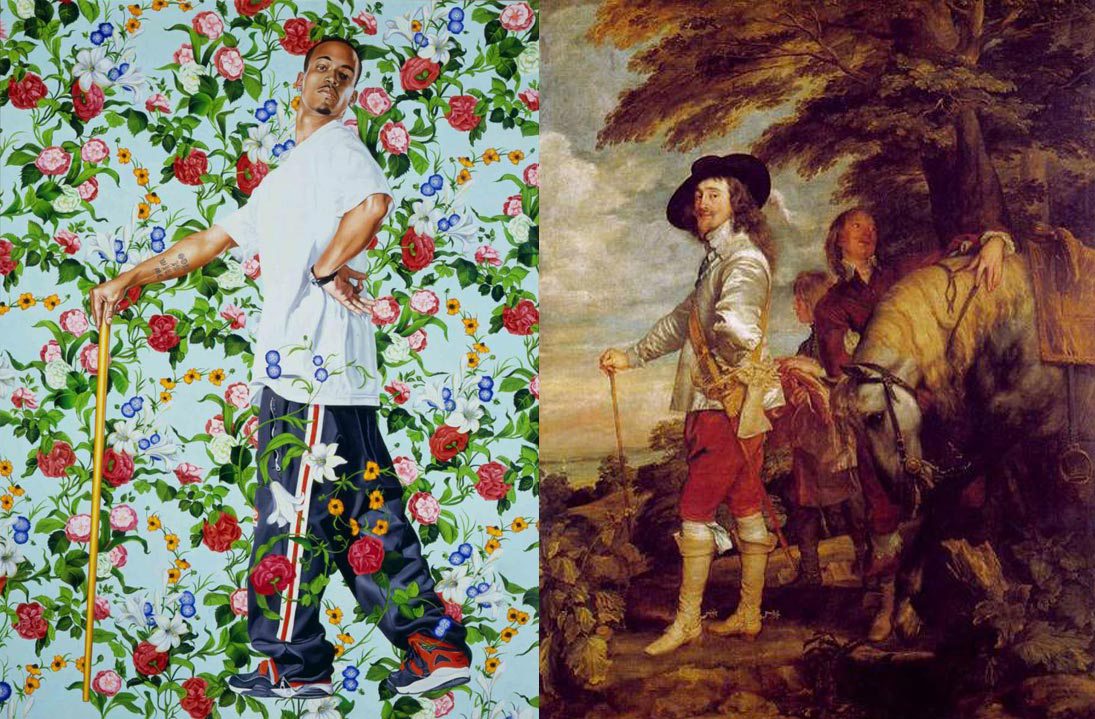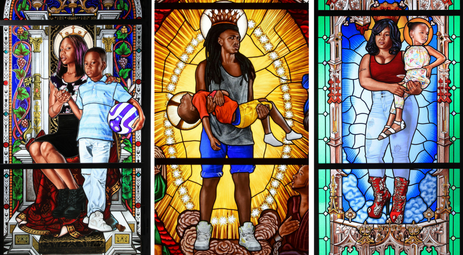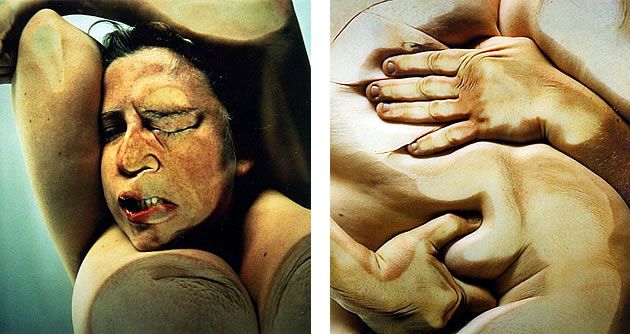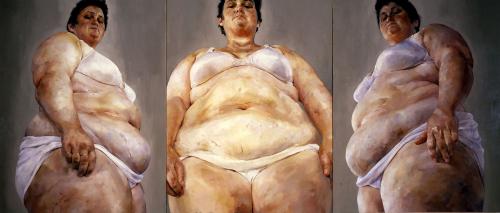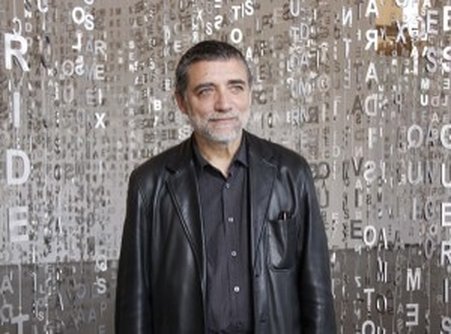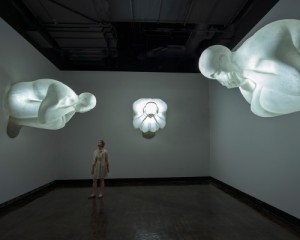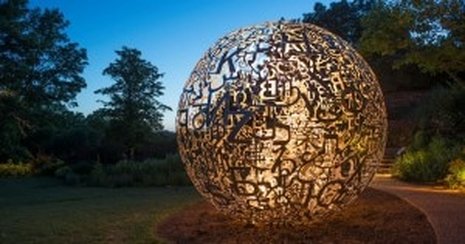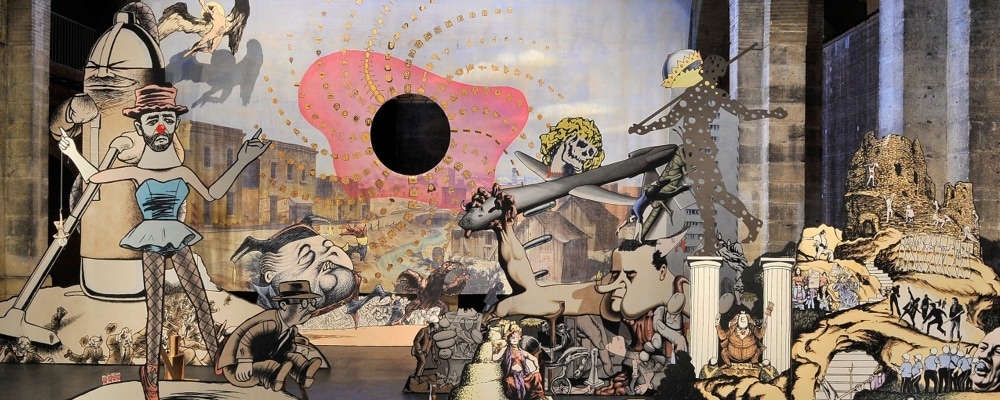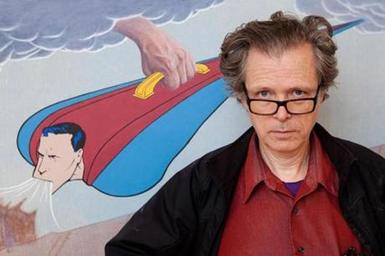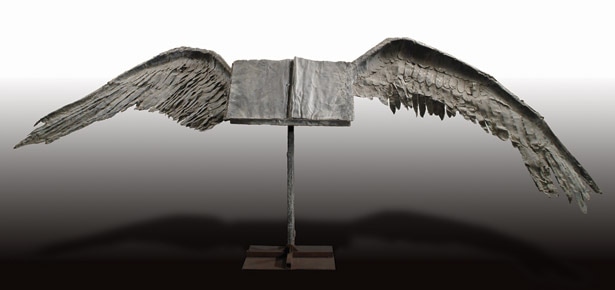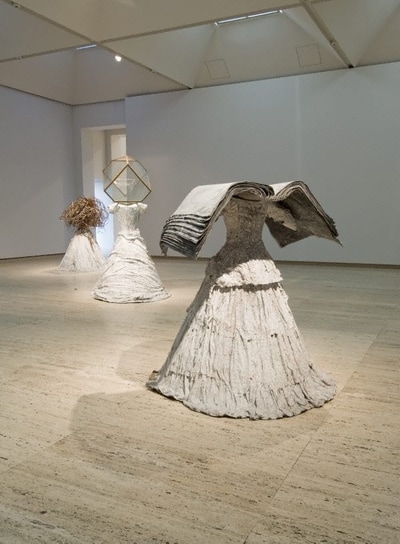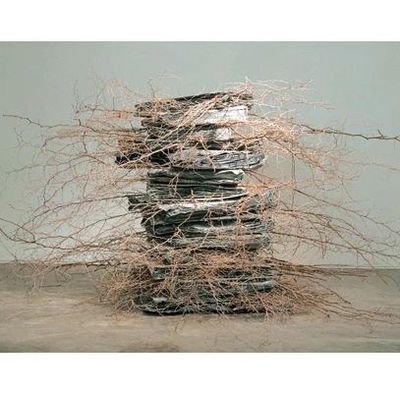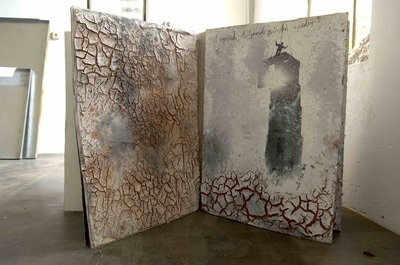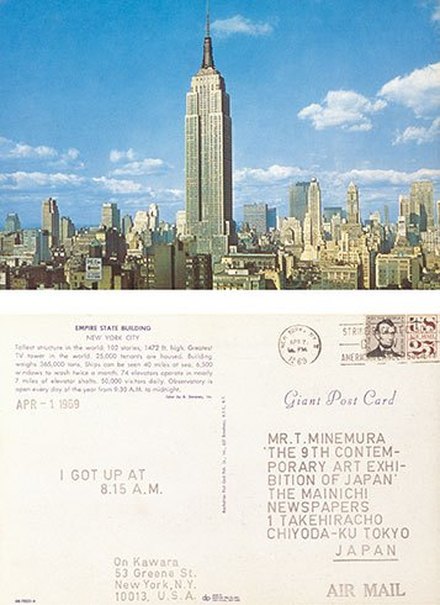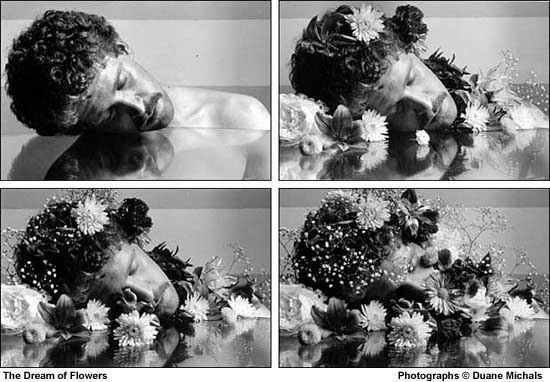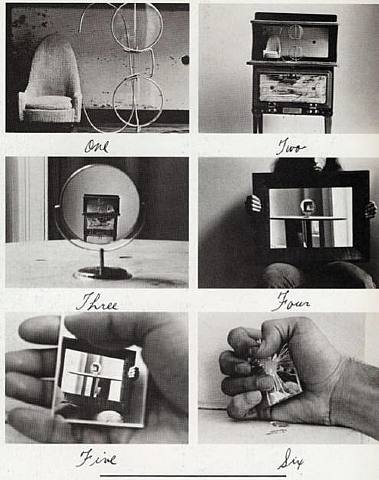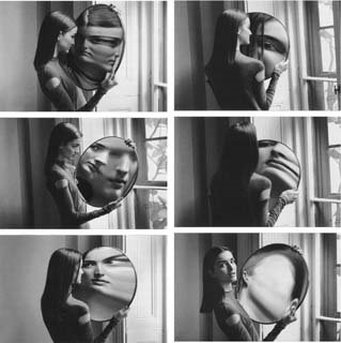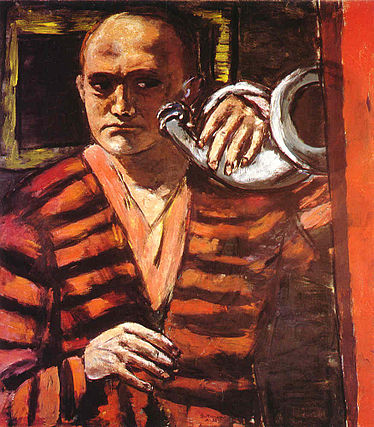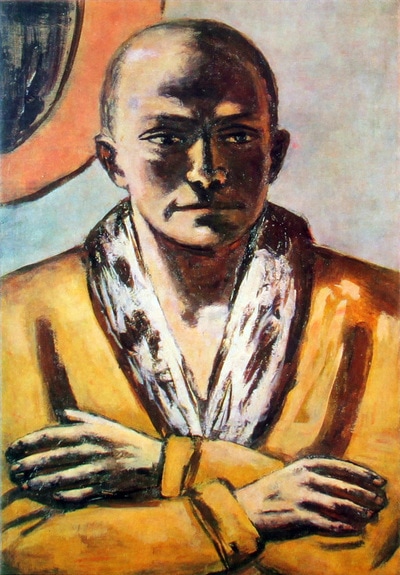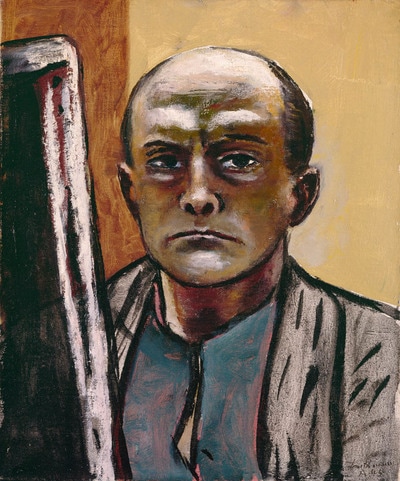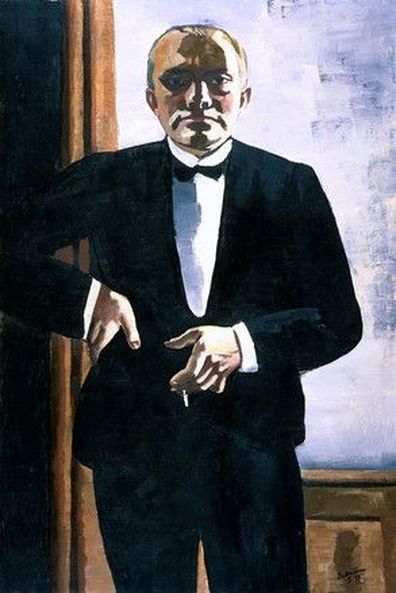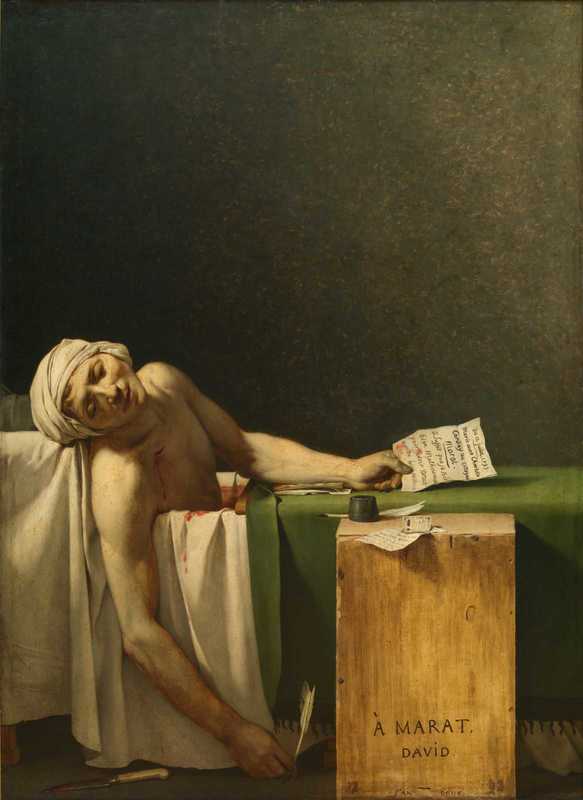Themes & Artists
The Sacred Realm: Religion, Ritual and Spirituality
Georges Roualt, Andres Serano, Marc Chagall, Annette Messager
Politics and Society
Kiki Smith, Barbara Kruger, Leon Golub, Banksy, JR, Jean-Michel Basquiat, Norman Rockwell, Nancy Spero, Ai Weiwei, Andy Warhol, Ellen Gallagher, Lorna Simpson
Stories and Histories
Diego Rivera, Georgia OʼKeefe, Frida Kahlo, Raymond Pettibon, Kara Walker
Documenting Experience (Here and Now)
Edward Hopper, Sally Mann, Johannes Vermeer, Katsushika Hokusai, George Bellows, Elizabeth Peyton
The Human Experience (Looking Inward)
Louise Bourgeois, Egon Schiele, Kathe Kolowitz, Ellen Gallagher, Lorna Simpson
Invention & Fantasy
Salvador Dali, Rene Magritte, Hermonios Bosch, Paul Klee, Yayoi Kusama Art & Nature Andy Goldsworthy, Robert Smithson, Maya Lin, Alfred Steiglitz, Eugene Atget, Thomas Cole, Henri Rousseau, Albert Bierstadt, George Inness, Shen Zhou
Art & Art (Aesthetics)
Agnes Martin, Mark Rothko, Sol Lewitt, El Anatsui, Marcel DuChamp, Julie Mehretu
Identity
Claude Cahun (Lucy Schwob), Marcel Moore (Suzanne Malherbe),Revital Cohen, John Coplans, Robert Gober, Frida Kahlo, Deborah Kass, Wifredo Lam, Glenn Ligon, Ana Mendieta, Mariko Mori, Senga Nengudi, Adrian Piper,Richard Prince, Shahzia Sikander, Laurie Simmons, Lorna Simpson
Georges Roualt, Andres Serano, Marc Chagall, Annette Messager
Politics and Society
Kiki Smith, Barbara Kruger, Leon Golub, Banksy, JR, Jean-Michel Basquiat, Norman Rockwell, Nancy Spero, Ai Weiwei, Andy Warhol, Ellen Gallagher, Lorna Simpson
Stories and Histories
Diego Rivera, Georgia OʼKeefe, Frida Kahlo, Raymond Pettibon, Kara Walker
Documenting Experience (Here and Now)
Edward Hopper, Sally Mann, Johannes Vermeer, Katsushika Hokusai, George Bellows, Elizabeth Peyton
The Human Experience (Looking Inward)
Louise Bourgeois, Egon Schiele, Kathe Kolowitz, Ellen Gallagher, Lorna Simpson
Invention & Fantasy
Salvador Dali, Rene Magritte, Hermonios Bosch, Paul Klee, Yayoi Kusama Art & Nature Andy Goldsworthy, Robert Smithson, Maya Lin, Alfred Steiglitz, Eugene Atget, Thomas Cole, Henri Rousseau, Albert Bierstadt, George Inness, Shen Zhou
Art & Art (Aesthetics)
Agnes Martin, Mark Rothko, Sol Lewitt, El Anatsui, Marcel DuChamp, Julie Mehretu
Identity
Claude Cahun (Lucy Schwob), Marcel Moore (Suzanne Malherbe),Revital Cohen, John Coplans, Robert Gober, Frida Kahlo, Deborah Kass, Wifredo Lam, Glenn Ligon, Ana Mendieta, Mariko Mori, Senga Nengudi, Adrian Piper,Richard Prince, Shahzia Sikander, Laurie Simmons, Lorna Simpson
Art 21 Links:
Season 1: Place, Spirituality, Identity, Consumption
Artists: Laurie Anderson, Matthew Barney, Louise Bourgeois,Michael Ray Charles, Mel Chin, John Feodorov, Ann Hamilton,Margaret Kilgallen, Beryl Korot, Barbara Kruger, Maya Lin, Sally Mann, Kerry James Marshall, Barry McGee, Bruce Nauman,Pepón Osorio, Richard Serra, Shahzia Sikander, James Turrell,William Wegman, Andrea Zittel
Season 2: Stories, Loss & Desire, Time, Humor
Artists: Eleanor Antin, Janine Antoni, Charles Atlas, Vija Celmins,Walton Ford, Trenton Doyle Hancock, Tim Hawkinson, Elizabeth Murray, Gabriel Orozco, Raymond Pettibon, Paul Pfeiffer, Martin Puryear, Collier Schorr, Kiki Smith, Do-Ho Suh, Kara Walker
Season 3: Power, Memory, Play, Structures
Artists: Laylah Ali, Ida Applebroog, Ellen Gallagher, Cai Guo-Qiang, Arturo Herrera, Oliver Herring, Roni Horn, Teresa Hubbard & Alexander Birchler, Mike Kelley, Josiah McElheny, Matthew Ritchie, Susan Rothenberg, Jessica Stockholder, Hiroshi Sugimoto, Richard Tuttle, Fred Wilson, Krzysztof Wodiczko
Season 4: Romance, Protest, Ecology, Paradox
Artists: Robert Adams, Jennifer Allora & Guillermo Calzadilla,Mark Bradford, Mark Dion, Jenny Holzer, Pierre Huyghe, Alfredo Jaar, An-My Lê, Iñigo Manglano-Ovalle, Judy Pfaff, Lari Pittman,Robert Ryman, Laurie Simmons, Nancy Spero, Catherine Sullivan, Ursula von Rydingsvard
Season 5: Compassion, Fantasy, Transformation, Systems
Artists: John Baldessari, Cao Fei, Mary Heilmann, William Kentridge, Kimsooja, Jeff Koons, Florian Maier-Aichen, Paul McCarthy, Allan McCollum, Julie Mehretu, Doris Salcedo, Cindy Sherman, Yinka Shonibare MBE, Carrie Mae Weems
Season 6: Change, Boundaries, History, Balance
Artists: Marina Abramović, Ai Weiwei, David Altmejd, El Anatsui,assume vivid astro focus, Charles Atlas, Lynda Benglis,Rackstraw Downes, Glenn Ligon, Robert Mangold, Mary Reid Kelley, Catherine Opie, Sarah Sze, Tabaimo
Season 7: Investigation, Secrets, Legacy, Fiction
Artists: Tania Bruguera, Abraham Cruzvillegas, Leonardo Drew,Omer Fast, Katharina Grosse, Thomas Hirschhorn, Elliott Hundley, Graciela Iturbide, Joan Jonas, Wolfgang Laib, Trevor Paglen, Arlene Shechet
Source: http://www.art21.org/teach/materials-for-teaching/educators-guides
Artists: Laurie Anderson, Matthew Barney, Louise Bourgeois,Michael Ray Charles, Mel Chin, John Feodorov, Ann Hamilton,Margaret Kilgallen, Beryl Korot, Barbara Kruger, Maya Lin, Sally Mann, Kerry James Marshall, Barry McGee, Bruce Nauman,Pepón Osorio, Richard Serra, Shahzia Sikander, James Turrell,William Wegman, Andrea Zittel
Season 2: Stories, Loss & Desire, Time, Humor
Artists: Eleanor Antin, Janine Antoni, Charles Atlas, Vija Celmins,Walton Ford, Trenton Doyle Hancock, Tim Hawkinson, Elizabeth Murray, Gabriel Orozco, Raymond Pettibon, Paul Pfeiffer, Martin Puryear, Collier Schorr, Kiki Smith, Do-Ho Suh, Kara Walker
Season 3: Power, Memory, Play, Structures
Artists: Laylah Ali, Ida Applebroog, Ellen Gallagher, Cai Guo-Qiang, Arturo Herrera, Oliver Herring, Roni Horn, Teresa Hubbard & Alexander Birchler, Mike Kelley, Josiah McElheny, Matthew Ritchie, Susan Rothenberg, Jessica Stockholder, Hiroshi Sugimoto, Richard Tuttle, Fred Wilson, Krzysztof Wodiczko
Season 4: Romance, Protest, Ecology, Paradox
Artists: Robert Adams, Jennifer Allora & Guillermo Calzadilla,Mark Bradford, Mark Dion, Jenny Holzer, Pierre Huyghe, Alfredo Jaar, An-My Lê, Iñigo Manglano-Ovalle, Judy Pfaff, Lari Pittman,Robert Ryman, Laurie Simmons, Nancy Spero, Catherine Sullivan, Ursula von Rydingsvard
Season 5: Compassion, Fantasy, Transformation, Systems
Artists: John Baldessari, Cao Fei, Mary Heilmann, William Kentridge, Kimsooja, Jeff Koons, Florian Maier-Aichen, Paul McCarthy, Allan McCollum, Julie Mehretu, Doris Salcedo, Cindy Sherman, Yinka Shonibare MBE, Carrie Mae Weems
Season 6: Change, Boundaries, History, Balance
Artists: Marina Abramović, Ai Weiwei, David Altmejd, El Anatsui,assume vivid astro focus, Charles Atlas, Lynda Benglis,Rackstraw Downes, Glenn Ligon, Robert Mangold, Mary Reid Kelley, Catherine Opie, Sarah Sze, Tabaimo
Season 7: Investigation, Secrets, Legacy, Fiction
Artists: Tania Bruguera, Abraham Cruzvillegas, Leonardo Drew,Omer Fast, Katharina Grosse, Thomas Hirschhorn, Elliott Hundley, Graciela Iturbide, Joan Jonas, Wolfgang Laib, Trevor Paglen, Arlene Shechet
Source: http://www.art21.org/teach/materials-for-teaching/educators-guides
Questions to Consider:
Record your responses in the Visual Art Journal
- Which theme does your work most clearly address? Explain how your work aligns with that theme. Use descriptive language.
- Describe how the subject of your current work fits the theme that you identify. Describe how your research influenced your choices in developing it.
- Compare and contrast: In what ways does your current artwork address similar issues, imagery, ideas – or utilize the material(s) and technique(s) in comparison to an artwork that you have researched?
Source: https://bsgeweb.files.wordpress.com/2013/06/12th-grade-summer-assignment-dip-candidates-2013-14.pdf
Vally Nomidou (Athens, Greece)
|
"Fragility is the way women artists insisted to present as a plastic value in the 20th century. I worked out my figures spontaneously with the intention to show the mental state of ‘’between’. Between different trends, orientations, routes, decisions. The situation to be between and to do connections, fragile connections with a variety of possibilities, with uncertainty. Without a final decision. With tyranny. The difficulty, the sensitivity, the contrary emotions that coexist, the agony, the empathy, the cowardice, the fear. The game and the pleasure to express all this situation sometimes gently and sometimes hard. That wonderful ’embarrassment’ in routes which you discover surprisingly. All these are a fragile world written on the female body which I build." - Vally Nomidou
Source: http://zoneonearts.com.au/vally-nomidou/ A quiet, introspective technique of self-healing: The fragile yet strong figures by Vally Nomidou The new figures by Vally Nomidou, in the same evolutionary path of the last decade, shock because they reveal the intensity of their creation. The figures betray an unbearable process of self-knowing, an existential condition through the convergence of art and life. The exhibition, entitled “Let it bleed“, is a series of life-size sculptures, as well as a series of fragments, such as heads or hands, all made of paper. The works depict young women and young girls. The female figures impress with the naturalness of their features and poses, the perfection of modelling and the beauty of volume. |
Paper, Nomidou’s dominant material, now becomes a key component in her creative process, inextricably linked to painful and systematic research on the technical level, as well as on that of aesthetic integration. The artist respects her material and, although it is cheap and vulnerable, she does not “adulterate” it by using other materials. Moreover, she does not use it as a shell, an encasing to cover a necessary inner structure by providing a fake, idealised skin. Nomidou builds and shapes her works from the inside out solely using paper and paperboard. The internal cardboard frame is built with a vertical and horizontal grid in order to be able to support and render stillness in her sculptures, while also ensuring balance in contraction and expansion. The homogeneity of her material allows the equilibrium in the behaviour of the interior and the exterior, and thus ensures its duration.
Source: vallynomidou.wordpress.com/
Source: vallynomidou.wordpress.com/
AnoukKruithof (Dordecht, Netherlands 1981-) "Subconscious Travelling"
|
|
installation out of 99 photo stickers (18-23 cm) and 5 pieces of colored glass (18-23 cm) size 660 cm by 73 cm
This installation was shown in New Photography 2015: Ocean of Images at MoMA New York 2015/2016, Loin des yeux at OPTICA, Montreal, Canada 2016 and in WIT at Het Nederlands Fotomuseum 2013/2014 Subconscious Travelling is an installation of 99 photo stickers and 5 pieces of color glass. Directly applied to the wall, these images capture empty photo-negative sleeves from an anonymous album – most likely documenting travels, as the hand written names of cities and places indicate. Kruithof found and bought the book on flea market in Berlin. |
|
Captivated by the seemingly functionless negative cutouts, she re-photographed the pages using her Iphone with flash function. The white circles of the reflecting flashlight emphasize the search for information – the moment of standing outside trying to look inside and into these residues of erased memories. By re-framing a traditional form of archiving images – the photo album (even if deprived of its pictures) – through 21st century device, Kruithof not only reflects on the changes of the photographic medium, but counteracts and comments on our contemporary obsession of taking one picture after the other – encouraging imagination.
Source: http://www.anoukkruithof.nl/subconscious-travelling/ |
Kehinde Wiley (1977-) "A New Republic"
|
“What I wanted to do was to look at the powerlessness that I felt as — and continue to feel at times — as a black man in the American streets. I know what it feels like to walk through the streets, knowing what it is to be in this body, and how certain people respond to that body. This dissonance between the world that you know, and then what you mean as a symbol in public, that strange, uncanny feeling of having to adjust for … this double consciousness.” - Kehinde Wiley
Source: http://wearyourvoicemag.com/more/culture/kehinde-wiley-inserting-blackness-art |
Kehinde Wiley is a New York based painter from Los Angeles who has situated himself firmly within art history's tradition of portrait painting. Wiley, as the contemporary descendent of a long line of portraitists including Reynolds, Gainsborough, Titian, Ingres, and others, appropriates the signs and visual rhetoric of the heroic, powerful, opulent, majestic, and sublime in his representations of young, urban, black men.
The subjects and stylistic references for his paintings are juxtaposed inversions of each other, forcing ambiguity and provocative perplexity to pervade his imagery. By applying the visual vocabulary and conventions of glorification, history, wealth, power, and prestige to subject matter drawn from the urban fabric in which he is embedded, Wiley presents his young men as both heroic and pathetic, aestheticized and reified, autonomous and manipulated. Ultimately, Wiley's practice disturbs and interrupts tropes of portrait painting to locate, in his words, "class struggle at the level of sign".
The subjects and stylistic references for his paintings are juxtaposed inversions of each other, forcing ambiguity and provocative perplexity to pervade his imagery. By applying the visual vocabulary and conventions of glorification, history, wealth, power, and prestige to subject matter drawn from the urban fabric in which he is embedded, Wiley presents his young men as both heroic and pathetic, aestheticized and reified, autonomous and manipulated. Ultimately, Wiley's practice disturbs and interrupts tropes of portrait painting to locate, in his words, "class struggle at the level of sign".
Wiley’s paintings often blur the boundaries between traditional and contemporary modes of representation. Rendered in a realistic mode –– while making references to specific old master paintings –– Wiley creates a fusion of period styles, ranging from French rococo, Islamic architecture and West African textile design to urban hip–hop and the "Sea Foam Green" of a Martha Stewart Interiors color swatch. Wiley's slightly larger than life size figures are depicted in a heroic manner, as their poses connote power and spiritual awakening. Wiley's portrayal of masculinity is filtered through these poses of power and spirituality.
His portraits are based on photographs of young men who Wiley sees on the street, begun last year with men mostly from Harlem's 125th Street, the series now includes models from the South Central neighborhood where he was born. Dressed in street clothes, they are asked to assume poses from the paintings of Renaissance masters, such as Titian and Tiepolo. Wiley also embraces French rococo ornamentation; his references to this style compliment his embrace of hip–hop culture. Similarly, the poses of his figures appear to derive as much from contemporary hip–hop culture as from Renaissance paintings.
The artist describes his approach as "interrogating the notion of the master painter, at once critical and complicit." Wiley's figurative paintings "quote historical sources and position young black men within that field of power." In this manner, Wiley's paintings fuse history and style in a unique and contemporary manner.
Source: http://www.artnet.com/awc/kehinde-wiley.html
His portraits are based on photographs of young men who Wiley sees on the street, begun last year with men mostly from Harlem's 125th Street, the series now includes models from the South Central neighborhood where he was born. Dressed in street clothes, they are asked to assume poses from the paintings of Renaissance masters, such as Titian and Tiepolo. Wiley also embraces French rococo ornamentation; his references to this style compliment his embrace of hip–hop culture. Similarly, the poses of his figures appear to derive as much from contemporary hip–hop culture as from Renaissance paintings.
The artist describes his approach as "interrogating the notion of the master painter, at once critical and complicit." Wiley's figurative paintings "quote historical sources and position young black men within that field of power." In this manner, Wiley's paintings fuse history and style in a unique and contemporary manner.
Source: http://www.artnet.com/awc/kehinde-wiley.html
Jenny Saville (1970-) "Sensation"
|
"I mean people do things in front of the mirror that they'd never do in front of other people. They have this image of themselves in the mirror. I wanted that intensity, the way you look at yourself when there's something wrong. That's all you see. You don't see any background, the background's irrelevant, all you see is you.
There is a thing about Beauty. Beauty is always associated with the male fantasy of what the female body is. I don't think there is anything wrong with beauty. It's just what women think is beautiful can be different. And there can be a beauty in individualism. If there is a wart or a scar, this can be beautiful, in a sense, when you paint it. It's part of your identity, Individual things are seeping out, leaking out. |
What comes out of these paintings is a fascination with the body. I think you have to sit back and think about the actual structure of the body underneath. Where the heat is. I mean, people who are seen as fat or overweight, who have like large bums, usually have circulation problems, so there's a coldness of lfesh next to the heat of a forearm. I think a lot of people don't think about how the body's made up. So it's that kind of thing I'm actually working on. I like thick paint. I think you've got the solidity of the body of the paint itself. But there are areas of flesh that aren't thick. So using thick paint's not appropriate. The feeling isn't big lumps and bumps. So sometimes I use thick paint, sometimes I use thinner paint. I don't have like a method, saying I'll build up slowly. I don't do any of that. I kind of draw it up sometimes, I have a basic outline of what I want, and start moving it about. But I'd never say that I started every painting in the same way at all. It's a sort of patience of trying things out and putting it in and taking it out. And just saying "give it a go." Because it's never the way you conceive it to be at all, and I don't think there's anything wrong in that, but lots of people get disappointed because they think: "I want it to be this." But I think if you keep going it becomes something. You grow every time you do a piece, anyway. You become the person in the painting or the painting changes you and your perception of things anyway." - Jenny Saville
Source: https://www.oneonta.edu/faculty/farberas/arth/arth200/Body/saville.html
Source: https://www.oneonta.edu/faculty/farberas/arth/arth200/Body/saville.html
|
Strategy, 1994, shows three views of an obese woman presumably on the verge of taking action. She is self-consciously sizing herself, looking at her body from different angles. The viewer is in a strange position, between disgust and empathy, yet is complicit in the tacit judgments placed on the woman’s body by the ideals presented in the images of mass media. Set slightly below the woman looking up, the viewer is less in a privileged position than a forbidden one. We are the scale or mirror looking back at the woman; we are her measure.
|
Saville draws much from the history of painting, especially artists known for pushing the human figure to its limits of stress and decomposition. She cites Diego Velázquez’s tonal virtuosity, the carcass paintings of Chaim Soutine and Rembrandt, and Willem de Kooning’s notion that “Flesh was the reason oil paint was invented” as key influences. Critics also add a roster of British painters, including Francis Bacon, Frank Auerbach, and Lucian Freud, as important forerunners and inspirations for Saville’s work. What seems to separate Saville from her influences, however, is her reliance on conceptual, critical social messages instead of subjective expression.
Source: http://www.thebroad.org/art/jenny-saville
Source: http://www.thebroad.org/art/jenny-saville
Jaume Plensa (1955-) "Human Landscapes"
|
See No Evil, Hear No Evil, Speak No Evil (2010) shows three human figures demonstrating the parable. But the bodies in Plensa’s version hang from the walls, floating, rather than remain firmly planted on the ground. To the artist, they serve as a reminder of our failure to use our senses.
|
“Jaume is one of the most important contemporary sculptors working today,” said Amy Gilman, Toledo Museum of Art associate director and curator of contemporary art. “He is a poet. He is very thoughtful about language, and he’s choosing to express that in this visual way. You leave his work having had a moment of reflection and thoughtfulness that is a hard thing to come by in the very data-driven and internet-connected world that we live in.”
Born in Barcelona, Spain, in 1955, Plensa is internationally recognized for his large figurative sculptures and installations that produce enchanting and mystifying visions of the human form as landscape. A significant portion of his work is located in public spaces of cities in Spain, France, Japan, England, Canada, the United States and other countries. The Crown Fountain, unveiled in Chicago’s Millennium Park in 2004, is considered to be one of his most brilliant works and led to many commissions, including Roots (2014) in Tokyo. In Paula, the female visage, altered and stretched, becomes the focus. This head is striking against the greenery of an outdoor landscape and juxtaposed with the Museum’s neoclassical building.
|
“Tradition says that our face is a gift to others,” Plensa said. “The face is the only part of our body that cannot be seen by ourselves – the soul’s portrait. [And] in my point of view, the head is the palace of dreams, the main ‘place’ in our body.”
Plensa will discuss the exhibition in a conversation with Gilman at 6 p.m. June 23 in the Peristyle. The program is open to the public free of charge.
Source: http://www.toledomuseum.org/2016/05/31/jaume-plensas-sculptures-featured-in-new-exhibition-in-the-galleries-and-on-the-grounds-of-toledo-museum-of-art-toledo/
Jim Shaw (Midland, Michigan 1952-) "The End Is Here"
Over the past thirty years, Shaw has become one of the United States’ most influential and visionary artists, moving between painting, sculpture, and drawing, and building connections between his own psyche and America’s larger political, social, and spiritual histories. Shaw mines his imagery from the cultural refuse of the twentieth century, using comic books, record covers, conspiracy magazines, and obscure religious iconography to produce a portrait of the nation’s subconscious. Although a recognized icon of the Los Angeles art scene since the 1970s, Shaw has never had a comprehensive museum show in New York. This exhibition, which encompasses three floors of the New Museum, reveals the breadth and inventiveness of his art. A comprehensive selection of his works is presented alongside objects from his collections of vernacular art and religious didactic materials.
Shaw’s work is inspired by his childhood in suburban Michigan, his adopted home of Los Angeles where he has lived for over thirty years, and the dark and sprawling underbelly of America as a whole. Along with fellow Michigan-native Mike Kelley, Shaw moved to California in the 1970s to attend Cal Arts and was one of a number of notable artists to emerge from the school in the late 1970s and early ’80s. His work is distinguished by rigorous formal and structural analyses of neglected forms of vernacular culture, informed by his large collections of objects representative of consumer desires, religious fervor, and a constantly evolving counterculture. For Shaw, these seemingly mundane artifacts reflect shifting social and political values and the way in which individual Americans are the product of a variety of conflicting forces.
“The End is Here” presents some of Shaw’s most iconic projects, including early airbrush drawings; large selections from his series “Dream Drawings” (1992–99), “Dream Objects” (1994–present), and the sprawling “My Mirage” (1985–91); andLabyrinth: I Dreamt I was Taller than Jonathan Borofsky (2009), a large-scale, immersive installation of sculptures and painted theatrical backdrops. These instantly recognizable works and series—which succeed in reinvigorating and complicating traditional categories like portraiture, history painting, figurations, and abstraction—have never before been brought together in a single exhibition. This survey also includes a presentation of his collection of thrift store paintings, originally shown in New York in 1991, as well as his ongoing collection of religious and pedagogical materials. Presented under the title “The Hidden World,” this diverse assortment of pamphlets, posters, banners, and other ephemera catalogs the spiritual exhortations and admonishments of a constantly expanding pantheon of homegrown prophets and visionaries. These two collections demonstrate Shaw’s unique insight into the spiritual and aesthetic histories of America and the ways in which the obscure, personal expressions he has collected have informed his own unique artworks. As part of his process, Shaw consistently relies upon in-depth historical research, the exploration of his own personal experience and subconscious, and the creation of fictitious histories and characters. The combination of these strategies results in a powerful evocation of the themes of belief, madness, materialism, and war, as they continue to influence contemporary life.
Shaw’s work is inspired by his childhood in suburban Michigan, his adopted home of Los Angeles where he has lived for over thirty years, and the dark and sprawling underbelly of America as a whole. Along with fellow Michigan-native Mike Kelley, Shaw moved to California in the 1970s to attend Cal Arts and was one of a number of notable artists to emerge from the school in the late 1970s and early ’80s. His work is distinguished by rigorous formal and structural analyses of neglected forms of vernacular culture, informed by his large collections of objects representative of consumer desires, religious fervor, and a constantly evolving counterculture. For Shaw, these seemingly mundane artifacts reflect shifting social and political values and the way in which individual Americans are the product of a variety of conflicting forces.
“The End is Here” presents some of Shaw’s most iconic projects, including early airbrush drawings; large selections from his series “Dream Drawings” (1992–99), “Dream Objects” (1994–present), and the sprawling “My Mirage” (1985–91); andLabyrinth: I Dreamt I was Taller than Jonathan Borofsky (2009), a large-scale, immersive installation of sculptures and painted theatrical backdrops. These instantly recognizable works and series—which succeed in reinvigorating and complicating traditional categories like portraiture, history painting, figurations, and abstraction—have never before been brought together in a single exhibition. This survey also includes a presentation of his collection of thrift store paintings, originally shown in New York in 1991, as well as his ongoing collection of religious and pedagogical materials. Presented under the title “The Hidden World,” this diverse assortment of pamphlets, posters, banners, and other ephemera catalogs the spiritual exhortations and admonishments of a constantly expanding pantheon of homegrown prophets and visionaries. These two collections demonstrate Shaw’s unique insight into the spiritual and aesthetic histories of America and the ways in which the obscure, personal expressions he has collected have informed his own unique artworks. As part of his process, Shaw consistently relies upon in-depth historical research, the exploration of his own personal experience and subconscious, and the creation of fictitious histories and characters. The combination of these strategies results in a powerful evocation of the themes of belief, madness, materialism, and war, as they continue to influence contemporary life.
|
Jim Shaw was born in 1952 in Midland, Michigan, and lives and works in Los Angeles, California. He received a BFA from the University of Michigan, Ann Arbor, in 1974 and an MFA from the California Institute of the Arts in 1978. Shaw has had major solo exhibitions at the Chalet Society, Paris (2014); BALTIC Centre for Contemporary Art, Gateshead, England (2012); Los Angeles County Museum of Art (2012); CAPC, musée d’art contemporain de Bordeaux, France (2010); P.S.1 Contemporary Art Center, Long Island City (2007); and Casino-Luxembourg—Forum d’Art contemporain, Luxembourg (1999). His work has been featured in a number of important international group exhibitions.
Source: http://www.newmuseum.org/exhibitions/view/jim-shaw-the-end-is-here |
Anselm Kiefer (Germany 1945-) "Sculptural Books"
|
Since 1969 Anselm Kiefer has consistently returned to the book as subject matter. As a primary source of knowledge and a repository of world religions, books are a powerful and paradoxical symbol for the artist. Eventually Kiefer’s books became freestanding sculptures, massive symbols of the artist’s investigation of world knowledge through images. Book with Wings consists of a massive lead book supported on a steel lectern. The pages of the open book sprout two majestic wings. The Museum’s book is one of two made by Kiefer, “one triumphant and the other drooping and in repose.” The Modern’s winged book is the triumphant version, its wings lifting high off the pages, as if about to take flight. Nonetheless, this sculpture, like so much of the artist’s work, is ironic—the wings are made of lead, and therefore cannot fly.
|
Another work owned by the Modern, die Aschenblume, 1983-97, exhibits Kiefer's attempt to come to terms with his national identity through Nazi imagery and symbolism. The work depicts the grand Mosaic Room in the Reich Chancellery, Berlin, designed by Albert Speer, receding into deep space, yet the artist has blurred its image by covering the surface of paint and emulsion with ash. The colossal ceremonial space is empty, except for the intrusion of a tall dried sunflower plant. In die Aschenblume, Kiefer uses unconventional materials to suggest processes of transformation. In this case, he suggests a space in a moment of transition, in which new images can grow from the brittle goals of the Third Reich.
Source: http://www.themodern.org/collection/Book-with-Wings/1156
Source: http://www.themodern.org/collection/Book-with-Wings/1156
On Kawara (Kariya, Japan 1933-2014) "I Got Up"
|
For the series I Got Up (1968–79), Kawara sent two postcards every day to friends, family members, collectors, and colleagues. On each postcard, he stamped the date, his name, his current address, the name and address of the recipient, and the phrase I GOT UP AT (always in English and capital letters) followed by the time he rose from bed. Tourist picture postcards were always used, and the text was aligned in a similar way each time. Only the language and format of the date, the address, and the postage stamp changed, according to where he was at the time. Some recipients received postcards for a month or more; others received only one card. When mailing consecutive cards to one person, he might create a play of combinations, sending multiple views of a single site, for example, or even repeatedly sending cards with the same image. Kawara often bought many postcards at once, but he always made the postcard on the day it was sent. Like his other serial works, I Got Up combines a rote, impersonal system with the communication of personal information. The mass production of postcards and mechanical stamps contrasts with the handmade nature of the work—the physical gesture of stamping—and the intimate moment it records.4 The series also contrasts a regular, repeated act with the act of doing something each day at changing times. Despite all the protocols, constraints, systems, and regularity, this series and others ended with an arbitrary event: the theft of the briefcase containing his stamp kits. Eventually the briefcase was returned, but Kawara never resumed the series.5 Source: https://www.guggenheim.org/arts-curriculum/topic/postcards-i-got-up |
|
|
Exhibition curators Jeffrey Weiss and Anne Wheeler and curator Kasper König discuss the art of On Kawara and the exhibition On Kawara—Silence, on view at the Solomon R. Guggenheim Museum, New York, February 6–May 3, 2015. Organized in cooperation with the artist, this exhibition is the first full representation of Kawara’s artistic output from 1963 to 2014. It includes works from Today (1966–2013), a series of Date Paintings; I Got Up, I Went, and I Met (all 1968–1979), series in which the artist used postcards, maps, and lists, respectively, to record his daily activities; and One Million Years (1970–1998) and One Hundred Years Calendars (ca. 1984–2012), which are both based around the form of the calendar. In this video, Weiss, Wheeler, and König consider Kawara’s practice in relation to the 1960s, Conceptualism, systems, and the passage of time.
Source: https://www.guggenheim.org/exhibition/on-kawara-silence |
Duane Michals (Pennsylvania, USA 1932-) "Sequences"
|
For a number of years, Michals worked in commercial photography, working for Esquire and Mademoiselle, and he covered the filming of The Great Gatsby for Vogue (1974). He did not have a studio. Instead, he took portraits of people in their environment, which was a contrast to the method of other photographers at the time, such as Avedon and Irving Penn.
In 1968 Michals was hired by the government of Mexico to photograph the 1968 Olympic Games. In 1970 his works were shown at the Museum of Modern Art in NYC. The portraits he took between 1958 and 1988 would later become the basis of his book, Album. In 1976 Michals received a grant from the National Endowment for the Arts. Michals also produced the art for the album Synchronicity (by The Police) in 1983, and Richard Barone’s Clouds Over Eden album in 1993. |
Duane Michals (b. February 18, 1932) is an American photographer. Largely self-taught, his work is noted for its innovation and artistry. Michals’ style often features photo-sequences and the incorporation of text to examine emotion and philosophy, resulting in a unique body of work.
Michals grew up in McKeesport, Pennsylvania. In 1953 he received a B.A. from the University of Denver. In 1956 he went on to study design at the Parsons School of Design with a plan to becoming a graphic designer, however he did not complete his studies. In 1958 while on a holiday in the USSR he discovered an interest in photography. The photographs he made during this trip became his first exhibition held in 1963 at the Underground Gallery in New York City. Michals (b. 1932) has continually rebelled against and expanded the documentary and fine art traditions. At the onset, he baffled critics who knew not what to say of his work, rejecting the notion of the “decisive movement,” the supremacy of the sensational singular image, and the glorification of the perfect print. As an expressionist, rather than going out into the world to collect impressions of the eye, he looked inward to construct the images of his mind, exploring the unseeable themes of life, death, sensuality, and innocence.
Shooting mostly Tri-X in available light, he’s maintained a simple process all these years, whether it was for his personal work, or for the commercial work that supported it—the LIFE magazine cover, the ad campaigns for Microsoft and Pampers, an album cover for the Police. Once a radical outlier, now a father of dominant trends, he inspired generations of photographers from Jim Goldberg and Cindy Sherman, to the countless others staging, scribbling over, and painting on their photographs today. “Photography deals exquisitely with appearances, but nothing is what it appears to be”. – Duane Michals, 1966 Source: https://oxfordschoolofphotography.wordpress.com/tag/duane-michals/ |
Max Beckman (Leipzig, Germany 1884-1950) "Self Portraits"
After enduring a "great injury to his soul" during World War I, Max Beckmann channeled his experience of modern life into expressive images that haunt the viewer with their intensity of emotion and symbolism. Despite his early leanings toward academicism and Expressionism, he became one of the main artists associated with the Neue Sachlichkeit (New Objectivity) movement and created scathing visual critiques of the tumultuous interwar period. In later works, Beckmann strove toward open-ended stories that juxtaposed scenes from reality, dreams, myths, and fables. Throughout his career, he firmly opposed the turn toward abstract art and maintained his desire to "get hold of the magic of reality and to transfer this reality into painting." Beckmann's prowess at subtly layering figures and signs, as well as color and shadow, allowed him to successfully translate his reality into mesmerizing narrative paintings throughout his prolific career.
- Beckmann was a medical officer during World War I, an experience that instigated a drastic shift in his artistic style away from a traditional, academic technique towards a more critically engaged and expressive style of painting.
- Beckmann deftly combined allegorical figures and images from reality in artworks rife with semiotic play that conveyed his individual interpretation of the cultural, social, and political climate throughout his career.
- Beckmann was preoccupied by the desire for thorough self-knowledge and, in this pursuit, executed over 85 self-portraits in a variety of media. This continued refinement of self-representation underlined his firm, lifelong belief in the importance of the autonomy of artists and their visions of the world.
- Beckmann experimented with the format of a triptych, or three-paneled painting. He translated the antiquated format, previously used only for medieval religious paintings, into the ideal support for his modern secular allegories.
|
Self Portrait in Tuxedo (1927)
Oil on canvas - Busch Reisinger Museum, Harvard University Throughout the course of his career, Beckmann completed over 85 self-portraits. His continued practice of self-representation underlines the significance he placed upon the individual and the exploration of the inner self. Here, Beckmann presented the public with an image of a self-possessed artist, confident and proud of his career and ability. He easily conveyed the self-assurance of an artist at the height of his success through the casual pose, expression of indifference, and fashionable garb. Created at the pinnacle of his career in Germany, Beckmann situated himself centrally within the painting, and visually confronts the viewer head-on, staring right through him. The composition is structured by vertical and horizontal planes, as opposed the jarring diagonals of his earlier works, which adds to the air of stability and certainty of the overall work. The dominance of black and white not only add to the severity of the work, but also allude to the continued, eternal drama of the creation and recreation of the world in art. The straight lines, simplified forms, and areas of sharp contrast are typical of his work at this time and lend a harsh elegance to the painting. Beckmann illustrated his belief that artists were "of vital significance to the state" and "new priests of a new cultural center" in this self-portrait. Despite the calm conveyed by the artist's expression, the deep shadows provide the work with an air of foreboding. The contrast between the assurance of the artist and the sense of impending unrest resulted in a dynamic tension that Beckmann sought to portray within all of his work and which fueled the strength of his symbolism during the 1930s and 1940s. Source: www.theartstory.org/artist-beckmann-max.htm |
Jacques-Louis David (Paris, France 1748-1825) "The Death of Marat"
|
A strangely hypnotic portrait, Jacques-Louis David's The Death of Marat has emerged as one of the most famous images of the blood-soaked French Revolution. The history behind this morbid masterpiece is even richer than its color palette.
1. THE DEATH OF MARAT DEPICTS A GRUESOME POLITICAL MURDER. Outspoken journalist and notable member of the Montagnards, Jean-Paul Marat would never see the French Revolution's conclusion in 1799. On July 13th of 1793, the 50-year-old writer was murdered by 24-year-old Charlotte Corday, who was either, depending on the propaganda you believe, a supporter of the monarchy or a supporter of the less radical Girondins, and blamed Marat for the escalating violence of the revolution. After making no attempt to escape after stabbing him, Corday was apprehended and executed by guillotine just four days later. 2. THE DEATH OF MARAT WAS PROPAGANDA.Not only the leading artist of his time, but also a zealous Jacobin and "official artist" of the radical revolutionary cause, David was asked by the revolutionary government to glorify three of its lost members for political gain. Essentially, David was charged with making Marat a publicly recognized martyr to the cause and an epic hero. 3. IT'S BOTH AN IDEALIZED AND ACCURATE PORTRAIT OF MARAT. The propaganda angle informed David's creative choices, urging him to blend fact and fiction. Almost like a crime scene photo, David carefully captured the green rug, bathtub, papers and pen left behind by the late revolutionary. However, he opted to exclude Marat's physical imperfections. The reason Marat was working in the bathtub to begin with was because he suffered from a skin condition, likely severe eczema. To soothe his skin, he habitually bathed in oatmeal. In depicting Marat’s final bath, David decided to portray his friend as a beautiful beacon, free of such superficial flaws. |
4. DAVID PULLED FROM RELIGIOUS INSPIRATION TO MAKE MARAT APPEAR LIKE A MARTYR. The positioning of Marat's right arm, long and limp, cascading down the canvas, has drawn comparisons to the death pose of Jesus in Caravaggio's The Entombment of Christ. David was a noted fan of the 16th century Italian painter and also mimicked his use of light.
5. DAVID ALSO DREW FROM GREEK AND ROMAN SCULPTURE. Art historian E.H. Gombrich explained of the creation of The Death of Marat:
"He had learned from the study of Greek and Roman sculpture how to model the muscles and sinews of the body, and gave it the appearance of noble beauty; he had also learned from classical art to leave out all the details which were not essential to the main effect, and to aim at simplicity.”
6. THE DEATH OF MARAT WAS REVOLUTIONARY FOR SEVERAL REASONS. The first is that it depicts a martyr of the French Revolution. The second is that it was painted in the midst of the French Revolution, mere months after Marat's demise. The last revolutionary element relates to how it marked a change from David's typical subject matter. He'd previously pulled his subjects from classical antiquity, but here his muse was a contemporary figure.
7. THE DEATH OF MARAT IS THE ONLY ONE OF DAVID’S PROPAGANDA PAINTINGS TO SURVIVE. The Death of Lepeletier was destroyed on July 27th, 1794 during the coup d'état known as the Thermidorian Reaction. The Death of Bara was never completed.
8. DAVID DECIDED TO EXCLUDE MARAT'S KILLER ALMOST COMPLETELY.While historian Alphonse de Lamartine would go on to describe Corday as "the Angel of Assassination," David was understandably less fond of Marat's murderer. He chose instead to focus on the man he admired, and only includes a mention of Corday in the writings surrounding Marat's corpse.
Similarly, he chose to remove the offending knife from his colleague's chest where Corday had left it. Instead, it sits, stained with blood, on the floor.
9. CORDAY'S TREACHERY IS REVEALED IN MARAT'S HAND. Corday gained access to Marat's private moment by entreating the writer to read a petition. As depicted by David, he was about to sign it as he was stabbed. The artist makes it clear that in his dying moments Marat's last thoughts were only of the revolution.
10. THE DEATH OF MARAT WAS INITIALLY POPULAR.Presented by David to his peers in November 15, 1793, the painting was instantly so beloved by the Montagnards and their sympathizers that it was hung in the hall of their National Convention of Deputies. Reproductions were also made for further propaganda use. But as the tide turned against the Montagnards, so too did opinion of the painting. To protect it, David hid the work when he himself was exiled for his part in the Reign of Terror.
11. THE DEATH OF MARAT GOT A SECOND LIFE AFTER DAVID'S DEATH.Twenty-one years after David passed away in 1825, renewed interest came from French art critic and poet Charles Baudelaire's praises of the long-forgotten portrait.
Baudelaire wrote:
“The drama is here, vivid in its pitiful horror. This painting is David’s masterpiece and one of the great curiosities of modern art because, by a strange feat, it has nothing trivial or vile … This work contains something both poignant and tender; a soul is flying in the cold air of this room, on these cold walls, around this cold funerary tub.”
12. THE ICONIC FRENCH PAINTING NOW CALLS BRUSSELS HOME. After having been banished for a second time after the fall of Napoleon, David fled with the painting and lived out the rest of his days in the Belgian capital. Sixty-one years later, David’s family decided to bequeath the painting to the city that accepted David. And the Royal Museum of Fine Arts has been proud to display The Death of Marat since 1886.
However, reproductions can be found in museums in Dijon, Reims, and Versailles.
13. IT HAS INSPIRED A COUPLE OF MAJOR TRIBUTES. In 1907, Edvard Munch, best known for The Scream, made an interpretation that put a nude Corday front and center. Picasso also applied his unique vision to the subject in 1931.
5. DAVID ALSO DREW FROM GREEK AND ROMAN SCULPTURE. Art historian E.H. Gombrich explained of the creation of The Death of Marat:
"He had learned from the study of Greek and Roman sculpture how to model the muscles and sinews of the body, and gave it the appearance of noble beauty; he had also learned from classical art to leave out all the details which were not essential to the main effect, and to aim at simplicity.”
6. THE DEATH OF MARAT WAS REVOLUTIONARY FOR SEVERAL REASONS. The first is that it depicts a martyr of the French Revolution. The second is that it was painted in the midst of the French Revolution, mere months after Marat's demise. The last revolutionary element relates to how it marked a change from David's typical subject matter. He'd previously pulled his subjects from classical antiquity, but here his muse was a contemporary figure.
7. THE DEATH OF MARAT IS THE ONLY ONE OF DAVID’S PROPAGANDA PAINTINGS TO SURVIVE. The Death of Lepeletier was destroyed on July 27th, 1794 during the coup d'état known as the Thermidorian Reaction. The Death of Bara was never completed.
8. DAVID DECIDED TO EXCLUDE MARAT'S KILLER ALMOST COMPLETELY.While historian Alphonse de Lamartine would go on to describe Corday as "the Angel of Assassination," David was understandably less fond of Marat's murderer. He chose instead to focus on the man he admired, and only includes a mention of Corday in the writings surrounding Marat's corpse.
Similarly, he chose to remove the offending knife from his colleague's chest where Corday had left it. Instead, it sits, stained with blood, on the floor.
9. CORDAY'S TREACHERY IS REVEALED IN MARAT'S HAND. Corday gained access to Marat's private moment by entreating the writer to read a petition. As depicted by David, he was about to sign it as he was stabbed. The artist makes it clear that in his dying moments Marat's last thoughts were only of the revolution.
10. THE DEATH OF MARAT WAS INITIALLY POPULAR.Presented by David to his peers in November 15, 1793, the painting was instantly so beloved by the Montagnards and their sympathizers that it was hung in the hall of their National Convention of Deputies. Reproductions were also made for further propaganda use. But as the tide turned against the Montagnards, so too did opinion of the painting. To protect it, David hid the work when he himself was exiled for his part in the Reign of Terror.
11. THE DEATH OF MARAT GOT A SECOND LIFE AFTER DAVID'S DEATH.Twenty-one years after David passed away in 1825, renewed interest came from French art critic and poet Charles Baudelaire's praises of the long-forgotten portrait.
Baudelaire wrote:
“The drama is here, vivid in its pitiful horror. This painting is David’s masterpiece and one of the great curiosities of modern art because, by a strange feat, it has nothing trivial or vile … This work contains something both poignant and tender; a soul is flying in the cold air of this room, on these cold walls, around this cold funerary tub.”
12. THE ICONIC FRENCH PAINTING NOW CALLS BRUSSELS HOME. After having been banished for a second time after the fall of Napoleon, David fled with the painting and lived out the rest of his days in the Belgian capital. Sixty-one years later, David’s family decided to bequeath the painting to the city that accepted David. And the Royal Museum of Fine Arts has been proud to display The Death of Marat since 1886.
However, reproductions can be found in museums in Dijon, Reims, and Versailles.
13. IT HAS INSPIRED A COUPLE OF MAJOR TRIBUTES. In 1907, Edvard Munch, best known for The Scream, made an interpretation that put a nude Corday front and center. Picasso also applied his unique vision to the subject in 1931.
|
14. IT'S REPEATEDLY REFERENCED IN POP CULTURE. In the movies, Stanley Kubrick's Barry Lyndon and Derek Jarman's Caravaggio mimic the painting’s composition in their mise-en-scene. Andrzej Wajda's Danton includes a scene of David's creation of The Death of Marat. The scene was brought to life in Abel Gance's 1927 film Napoleon. It was rendered in garbage in the landfill documentary Waste Land.
In 2013, it was gender-swapped with Lady Gaga in Marat's spot for ARTPOP. And it has even been memed in response to contemporary conflicts. 15. THE DEATH OF MARAT HAS BECOME MORE FAMOUS THAN MARAT. Because of David's moving—if manipulative—depiction of his fallen friend, The Death of Marat has struck a chord and spent the last two centuries becoming a highly recognized painting. Though some viewers might not know it by name, they recognize its influential iconography. But Marat the man is known primarily because of this very portrait. |
|
FINDYOUR THEME:
Theme: What does this mean?
To create meaningful art an artist needs to find a theme or topic with which they have a strong personal link. At this point in your IB course your theme can be broad and cover a wide range of subject matter (NATURE, MAN MADE, FASHION, BEAUTY etc) but it needs to be personally linked to you the artist. Think about what interests you. What fascinates you? What are you passionate about?
Some examples themes/motifs that you could choose from (but you are strongly encouraged to develop your own):
Filters
Approach your theme through a different “filter” – a way of considering your theme which can help you develop new ideas regarding your overall theme. Pick from the list below or create your own.
To create meaningful art an artist needs to find a theme or topic with which they have a strong personal link. At this point in your IB course your theme can be broad and cover a wide range of subject matter (NATURE, MAN MADE, FASHION, BEAUTY etc) but it needs to be personally linked to you the artist. Think about what interests you. What fascinates you? What are you passionate about?
Some examples themes/motifs that you could choose from (but you are strongly encouraged to develop your own):
- Metamorphosis – life cycles, change, alteration, transfiguration, mutation
- Music – sound, making tone visible, music culture, what do music and art have in common?
- Dance – movement, rhythm, repetition, physicality, meaning in gesture
- Legend/mythology – ancient, primitive, modern, stories, archetypes, moral lessons, religion, ritual, social obligations
- Nature vs. Science – current issues (bioethics) technology, how do we understand the world? Our place in the universe, limits of scientific knowledge, art and science, Cubism, Futurism, Orphism, etc.
- Myself - diary, memories, esteem, place in the world, pride, shame, family, heritage, ethnicity, self-portrait, friends, loves, enemies.
- Gender issues – male & female, role in society, in family, in evolution. Advantages/disadvantages of being one or the other. Stereotypes, cultural roles, sexuality, gender in politics, gender reversal.
- Scale – close-up/magnified, objects blown out of proportion, large vs. miniscule, other worlds of scale, space, positive/negative, color and texture.
- Other worlds – underwater, space, extraterrestrial, microscopic, imagination, computer/virtual world.
- Animals – other life, instinctual, life cycles of, physical/spiritual power in, ecology, animals as symbols, cultural associations with animals.
- Art and the senses – ways of knowing, art that smells, tastes, feels, etc. Art that appeals to alternative senses.
- Cryptography – art as code, codes in life, symbols, signs, text, sense in nonsense, order, mathematics, key to understanding.
- God/religion – creation, destruction, judgment, what is holy? Role of religion in society, metaphysics, personal sense of god, mercy, forgiveness, justification, sin, sacrifice.
- Kitsch – what is kitsch? What is beautiful? What is not? Value, mass production, pop culture, your own personal sense of kitsch, aspects of society as revealed in its kitsch.
- Graphics – use of line, color and composition to create a graphic identity, advertising, mass media, manipulation of imagery, the (blurred) line between what reality and the graphic representation.
- Human anatomy – body, muscle, bone, skin, weight distribution, issues of beauty and human body, use/abuse of the body, skin (color?), aging, disease.
- Dreams – meaning, analysis, associations, truth in, the bizarre, wish-fulfillment, imagery, Surrealism, the subconscious, Sigmund Freud.
- Chance – allowing chance to dictate art, automatic drawing, the Exquisite Corpse, Surrealism, Dadaism, kinetic art, image association.
- Emotion – human feelings, expression, knowledge through emotion, emotional situations, culture and emotions, controlled/uncontrolled emotions, conveying emotion, color, line and shape and emotions, Expressionism, Fauvism, Abstraction.
- Collection/series – repetition, repeated objects, objects in a series, objects that share something in common, distant vs. close relationships between objects, association.
- Beauty/ugliness – what defines these? What constitutes the appealing or the repulsive? Manipulating materials so that they take on appealing/repulsive qualities.
- “The Wedding”- from the engagement ring to the sealing kiss
- Architectural renderings- showing (exploring) the interior and exterior space with a strong focus on light, perspective and structure
- Exploration- using realistic and non-objective animals (stipple technique….a series of black and white ink drawings moving into color)
- Portraits and the human form
- Monkeys or primates
- Junk yard still life
- Tomatoes, from seed to fruit
- Fantasy characters – gargoyles, fairies, dragons, etc. – convincingly rendered
- Low riders
- Circus life
- My ancestry
- Crime and punishment
- Women in feminine roles
- “Seven deadly sins”
- “Things that make me smile”
- Historical events
- Reflections of images wherein the reflections are an emotional exploration (of literal reflections)
- Instruments that make music
- Icons w/in our society
- Strength of women (Cindy Sherman, Barbara Krueger)
- Dreams and dream images (Chagall, Dali)
- Dance images (degas)
- Struggle to find one’s self (identity)
- Figure studies in strong lights/darks
- Car interiors
- Abstract portraits
- Illustrate a classical character or story in a new or modern way (superemofriends)
- Childhood memories and feelings
- Evolution of an item as it deteriorates or decomposes
- Portrait/figure distortions in color/shapes (ed paschke)
- Personal or social issues
- Cultural diversity – social issues (diego rivera)
- Visual puns/hybrids (magritte)
Filters
Approach your theme through a different “filter” – a way of considering your theme which can help you develop new ideas regarding your overall theme. Pick from the list below or create your own.
- Self (you, your identity, self image, self-esteem) or dark self (see C.G. Jung)
- Family or ethnic group (not necessarily yours)
- Science & Technology
- Dreams/the surreal world,/alternate reality/questioning reality
- Society/Public vs. Private
- Gender issues/ Sexual politics
- Capitalism/ (Free)Trade/Economic equality/Globalism
- Epistemology (ie. how we know what we know)/TOK
- Conflict/resolution/war/peace
- Art/History/Art History/Interpretation
- Origins/Beginnings/Endings/divisions in time
- Age/Adolescence/Biological growth/evolution
- Location
- Power
- Symbols/Systems of Meaning/Codes
- Kitsch/Taste/Fashion
- Story/Narrative
- Humor/dark humor/
- Shock/Horror/Ugliness
- Any other suitable filter you might want to consider


